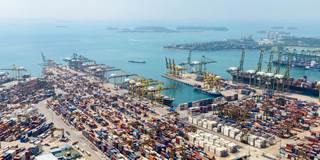Industrial policies come in many shapes and sizes, but some strategies to nurture domestic firms and industries have clearly worked better than others. Understanding why may hold the key to creating the conditions for contemporary growth and development.
CAMBRIDGE – A quarter-century ago, in the wake of the Thatcher and Reagan revolutions and the collapse of communism in Europe, the concept of “industrial policy” appeared to have been discredited in most of the developed world. Lately, however, it has been making a comeback. Indeed, the question of how government should bolster domestic industry has resurfaced in what ordinarily would be considered the most unlikely of places – the United States, where President Donald Trump has promised to back high-paying manufacturing jobs and routinely targets individual companies and business leaders for flattery or condemnation.

CAMBRIDGE – A quarter-century ago, in the wake of the Thatcher and Reagan revolutions and the collapse of communism in Europe, the concept of “industrial policy” appeared to have been discredited in most of the developed world. Lately, however, it has been making a comeback. Indeed, the question of how government should bolster domestic industry has resurfaced in what ordinarily would be considered the most unlikely of places – the United States, where President Donald Trump has promised to back high-paying manufacturing jobs and routinely targets individual companies and business leaders for flattery or condemnation.